Yet another excellent trip to the Sierra de la Culebra with Galanthus and a very friendly bunch of students from Barcelona and Girona universities. The only living wolf we saw was on the first morning. I set up our brand new telescope, focused and scanned for 10 seconds and incredibly spotted a wolf. This is the first creature to be seen through this scope! We enjoyed a few seconds each before it disappeared into the bush, not to be seen again for the rest of the trip. The trips are organised around occasionally freezing waits of an hour or so at dawn and dusk. No more wolves but we were entertained -at intervals- by plenty of red deer, a few roe deer, a family of wild boar -first I've seen there-, golden eagle, hen harriers, a short-toed eagle, both kites and a honey buzzard. Also crossbills, dunnocks and southern grey shrikes. We also caught a fleeting glimse of an otter in the Arribes del Duero. But the most remarkable thing we saw was dead. This was thanks to another wolf guide Jean-Marc Landry, author of the bloody excellent El Lobo (Le Loup) available in French or Spanish (Ediciones Omega), the best guide book to wolves I own. Jean-Marc was staying at La Veniata with us, and very kindly showed us a dead wolf he had stumbled across walking. One in a million chance. We guessed it had died 3-4 weeks ago. It still smelt somewhat rank and there was a feast of maggots underneath, but the skin was tanned. Its head had been severed by somebody no doubt looking for a trophy. How had it died? Shot? Maybe, but not by the person who took its head as the outline could be clearly seen around the grass. The head had clearly been taken recently. It could easily have died from natural causes or in a fight with another wolf. A month ago would be right at the height of the season when Alpha wolves are challenged. The incident has now been reported and no doubt the body is now on its way for autopsy.
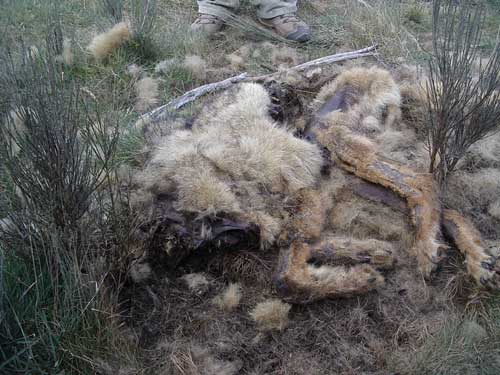
A muladar. After being put down, old donkeys and horses are thrown here to accustom wolves to feeding here. Rich hunters pay to for the privilege of shooting a wolf. An auction is held every year in Villardeciervos for right to hunt 3-4 wolves in the Reserva de Caza de La Sierra de la Culebra. They go for around 10,000 euros a piece, slightly less than for a prize red deer. Whatever we may well feel about some rich toff blasting away a defenceless animal, hunting 2-4 individuals within the Reserve has little or no impact on the wolf population. Wolves like foxes and are an R-strategy species (basically, they breed fast) and can withstand up to 50% mortality a year. Outside the reserve it is another story. Note the tear marks.
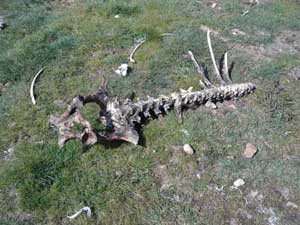 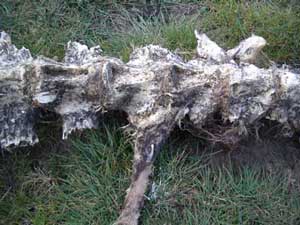
And a few metres away, the hide, where the man nobly shoots the beast.

Wolf scratch marks marking out territory. I'd never seen these before. To the right, a wolf's stride. Below, a close-up of front paws and red deer.
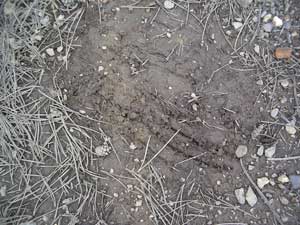 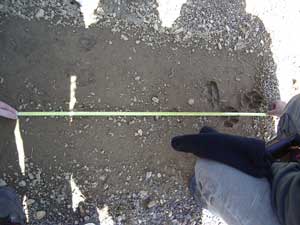 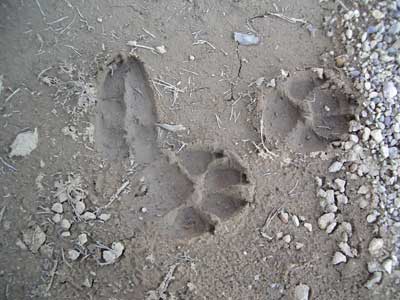
And nothing to do with wolves, we found this beautiful Schreiber's Green Lizard (Lacerta schreiberi - Lagarto verdinegro) a few metres from the house, living in old bank vole burrows by the stream. Lots of Iberian newts, salamander tadpoles and bank voles too.
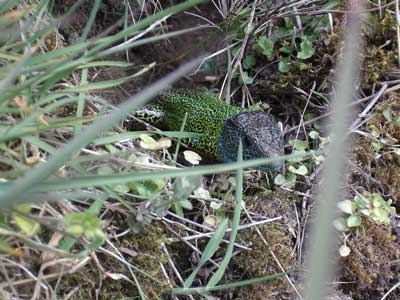 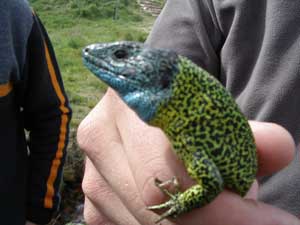
|